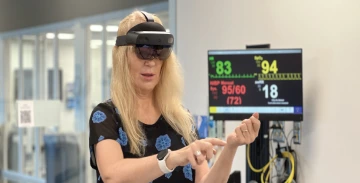
Q&A with Janine Hinton, director of the Steele Innovative Learning Center in the University of Arizona College of Nursing.
What are some ways that simulations, AI and other advanced technologies are making a difference in nursing?
There’s a landmark study by the National Council of State Boards of Nursing that showed up to 50% of nursing clinicals could be done in simulations without any difference on performance outcomes.
I think there’s also tremendous value in utilizing simulation for continuing education. We did a birthing mannequin refresher program for paramedics, and we recently collaborated with educators from the Donor Network of Arizona to explore how simulation can help ensure every possible organ remains undamaged and available for transplant.
Some research is exploring how AI could help guide care decisions based on past outcomes. What do we need to be thinking about as that proceeds?
Say you have two patients with a very similar diagnosis. For one patient, the insurance provider says we can use all the latest and greatest medications. For the other, only older, generic drugs. If those constraints aren’t part of the data input, how does AI process those outcomes?
The other big issues, I think, are social determinants of health – things like poverty, prior access to care, stress. Are algorithms accounting for all of that?
Again, consider two patients with the same diagnosis, but one is healthier, likely because of those social determinants. If you’re asking AI which one will benefit from an expensive intervention based on predicted survivability, is that ethical? Pre-existing challenges shouldn’t cause a continuation in health care disparities and inequities.
